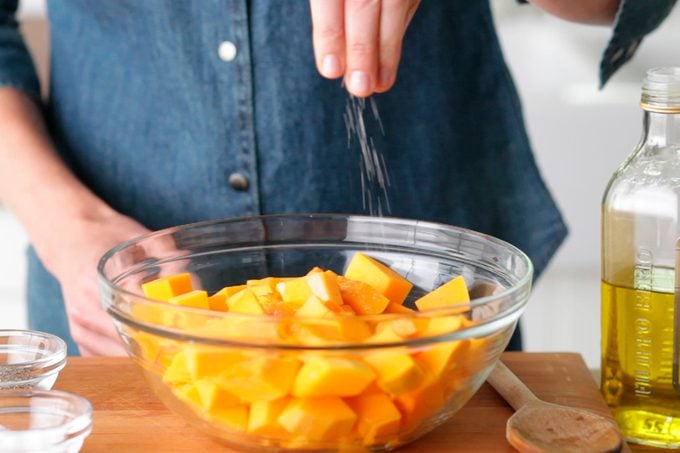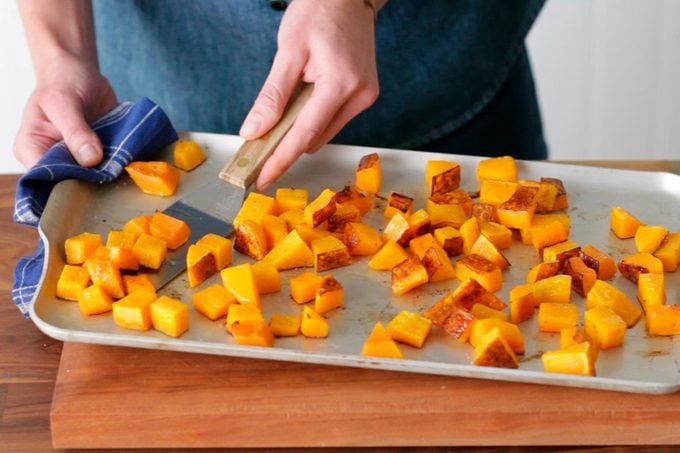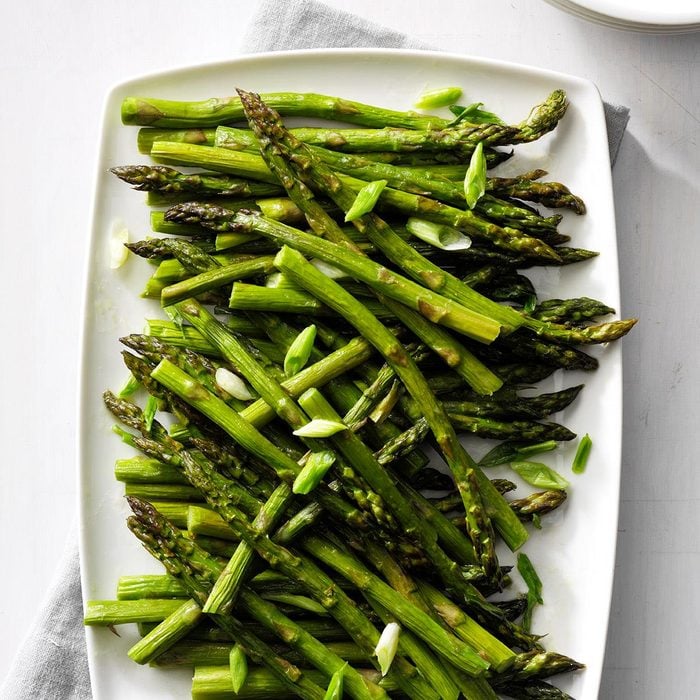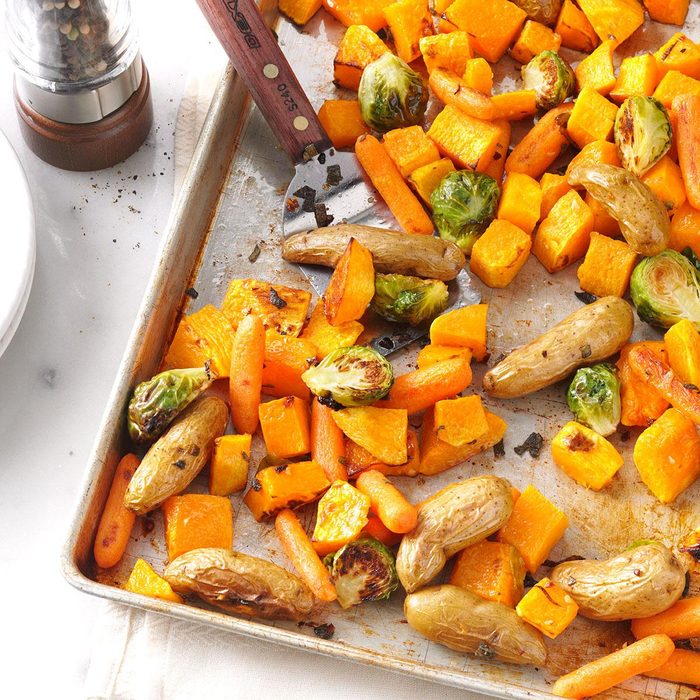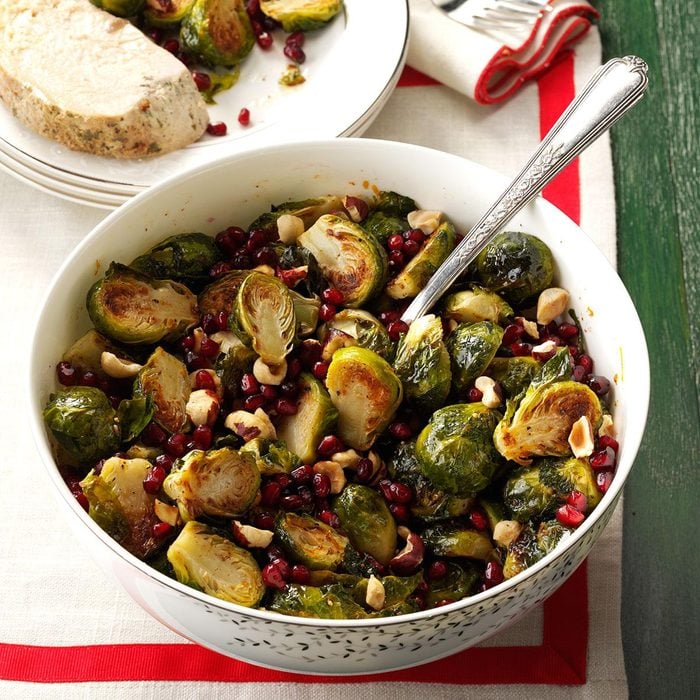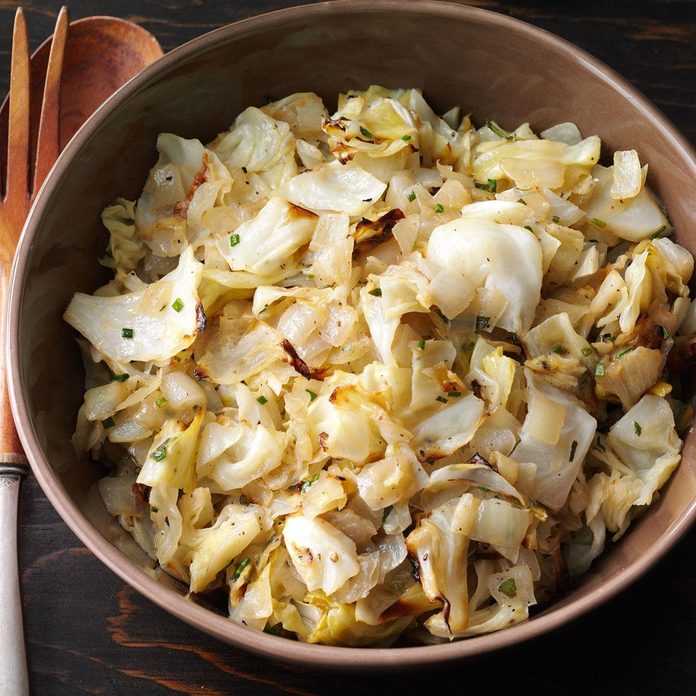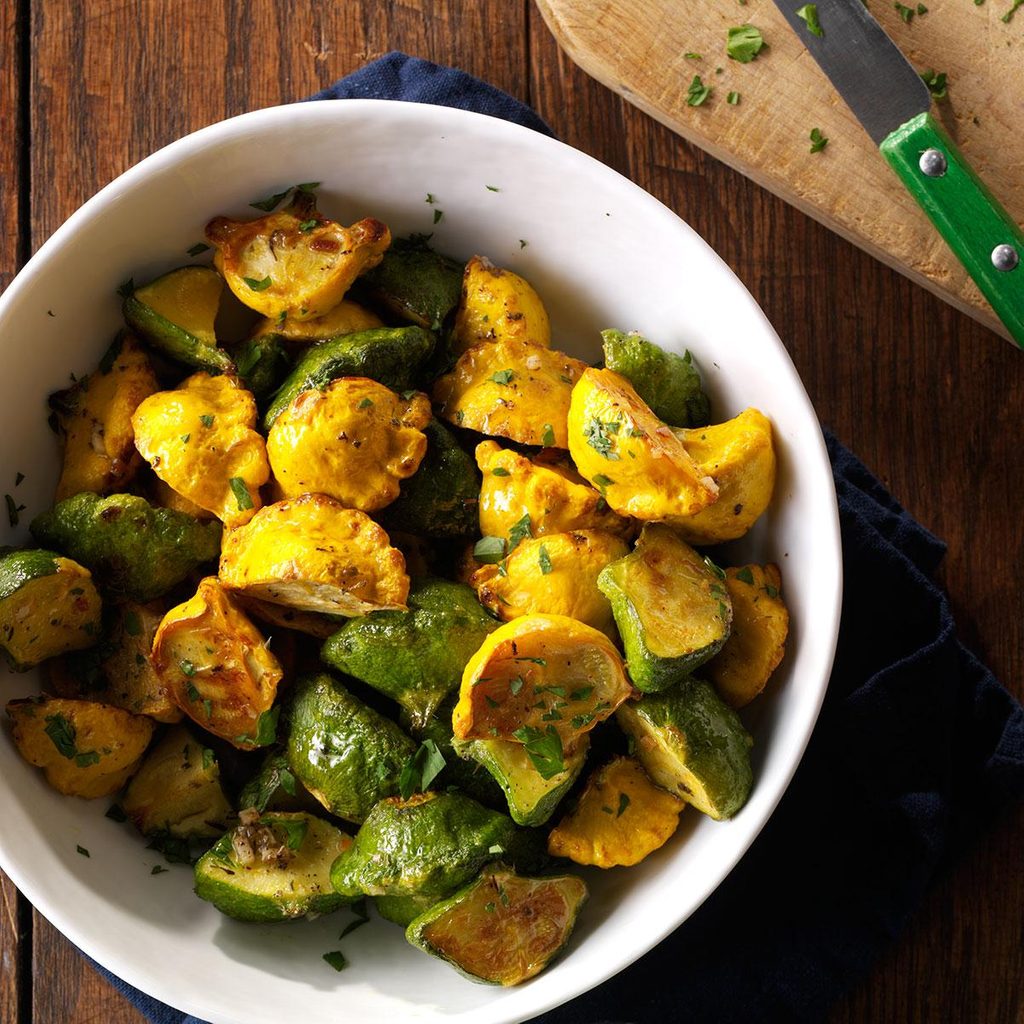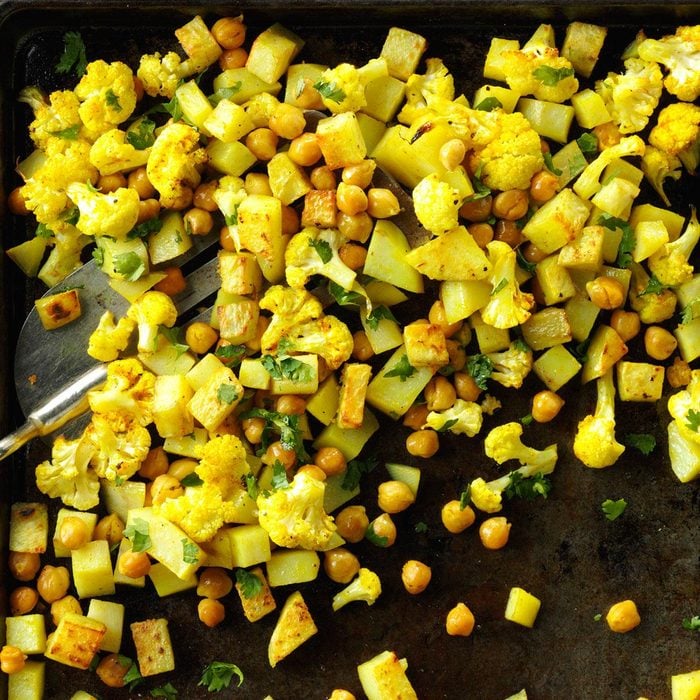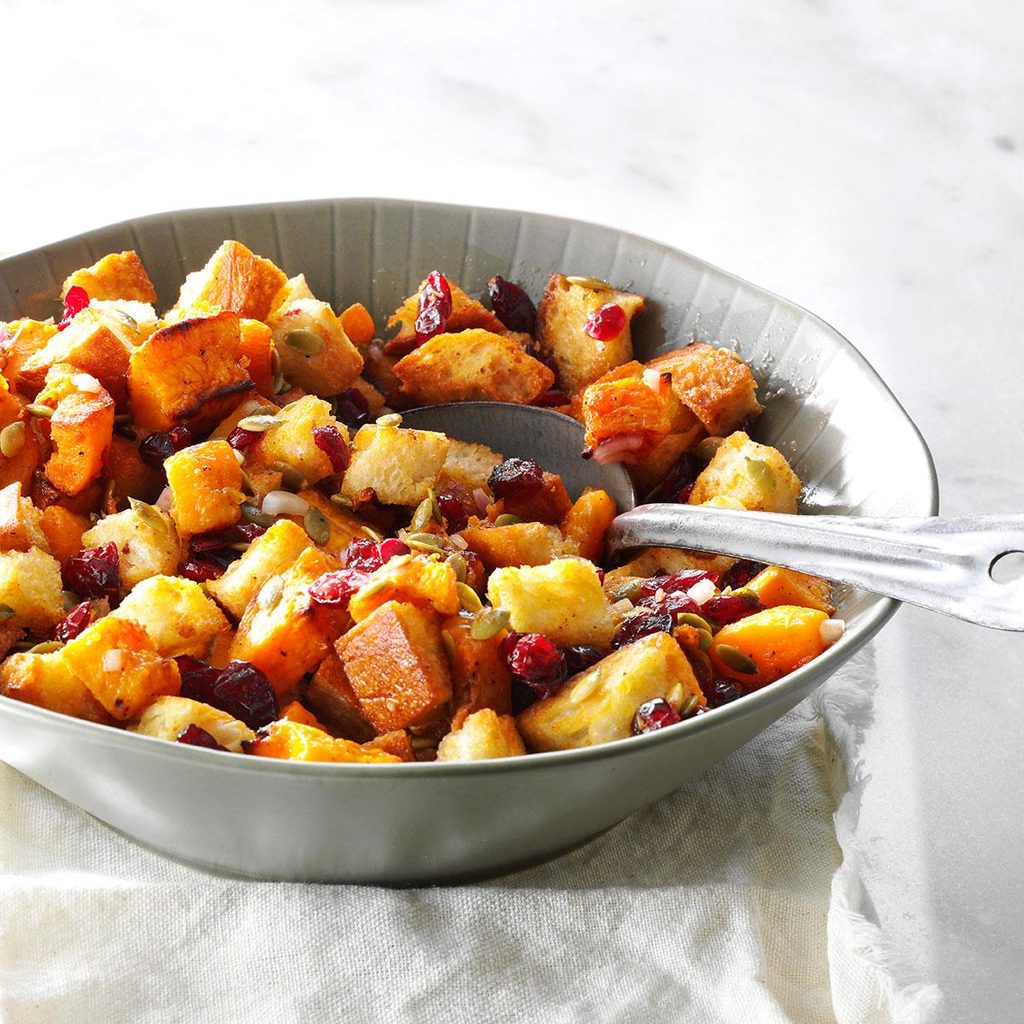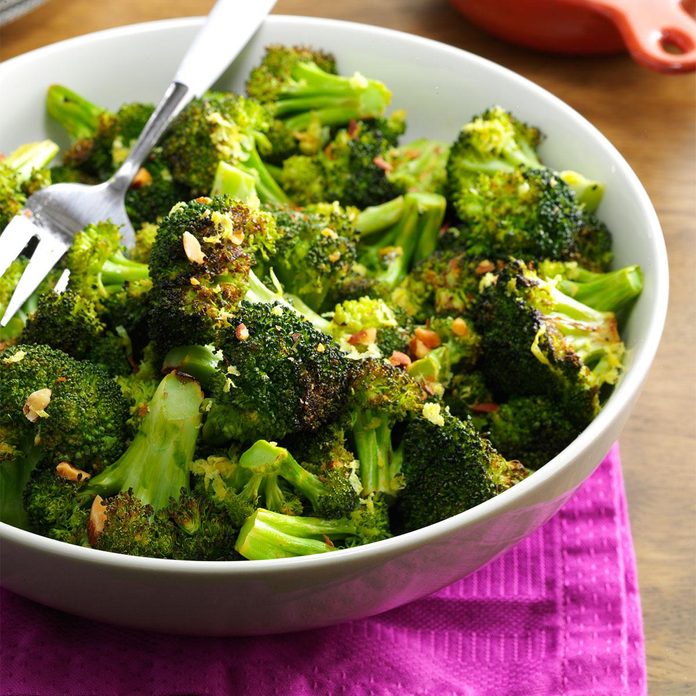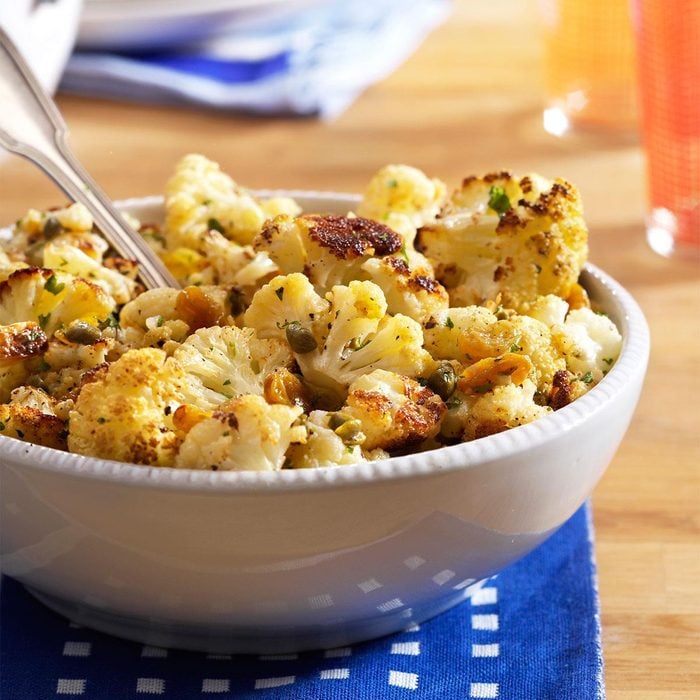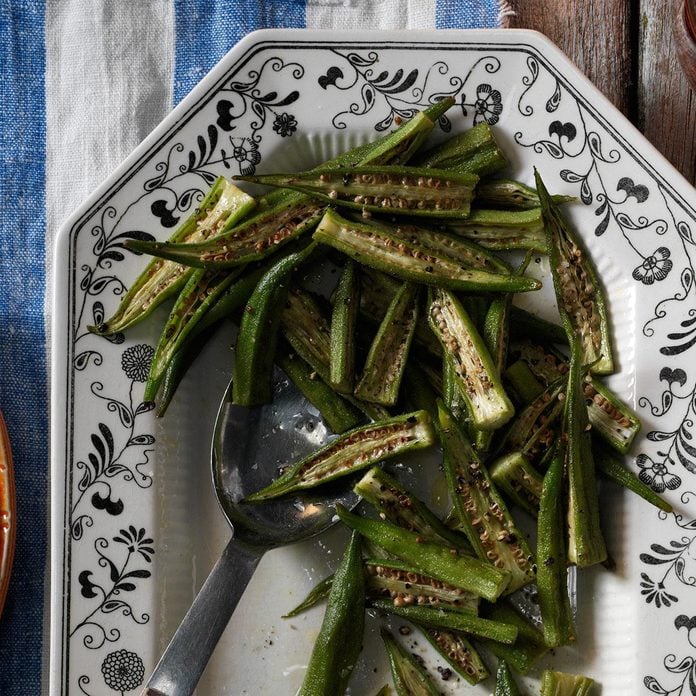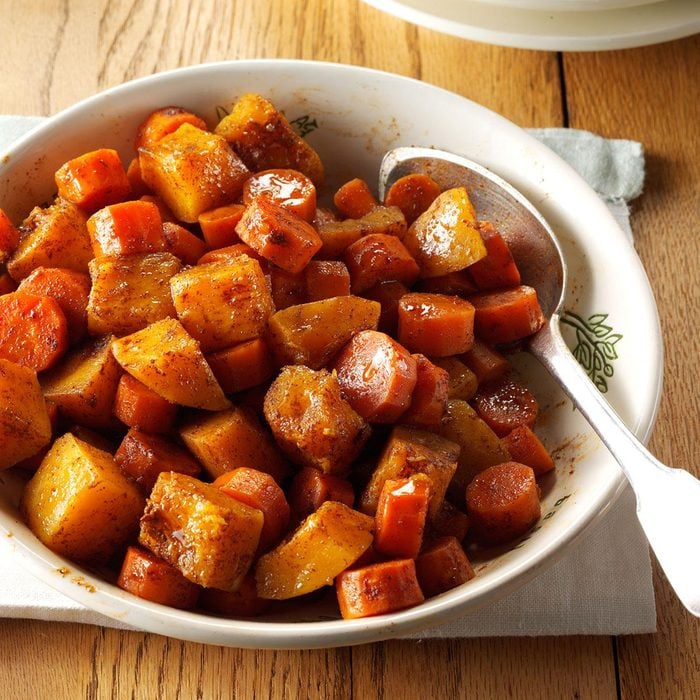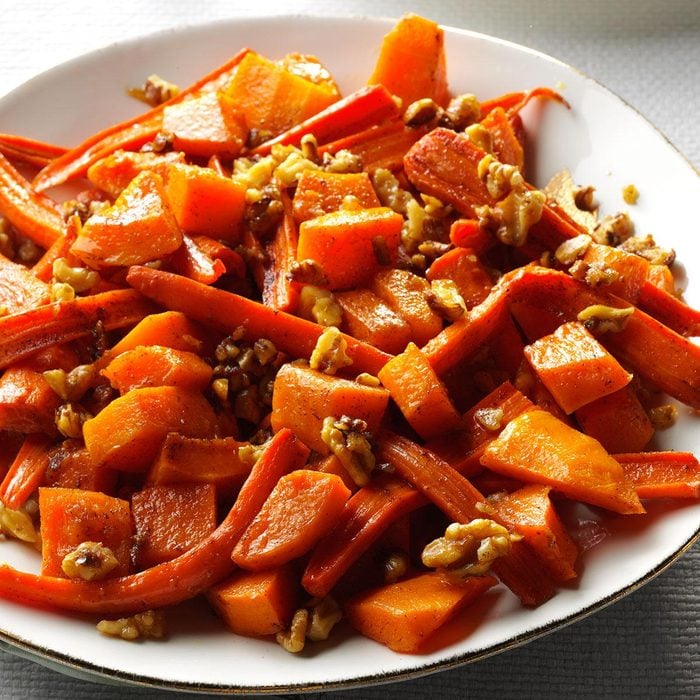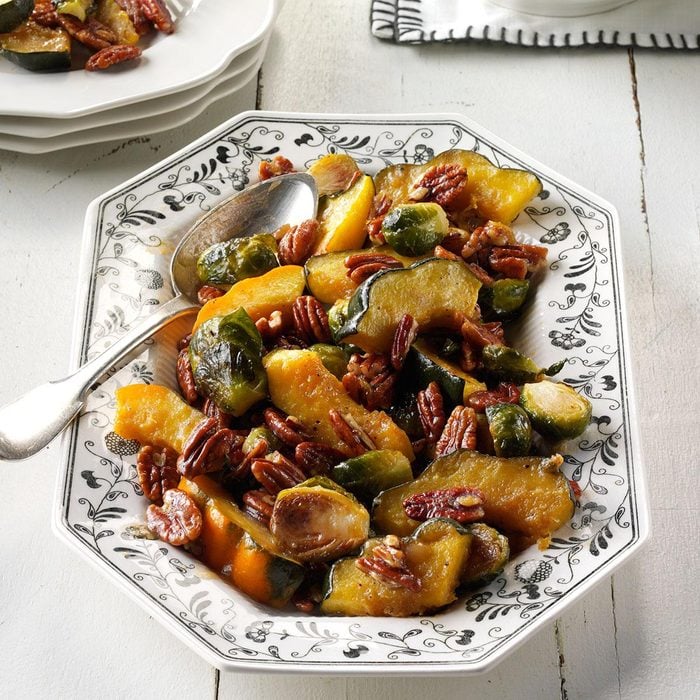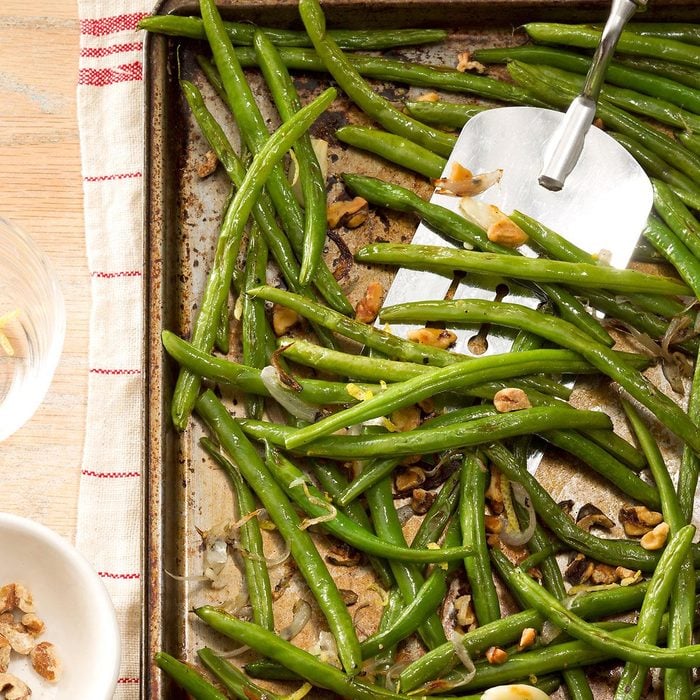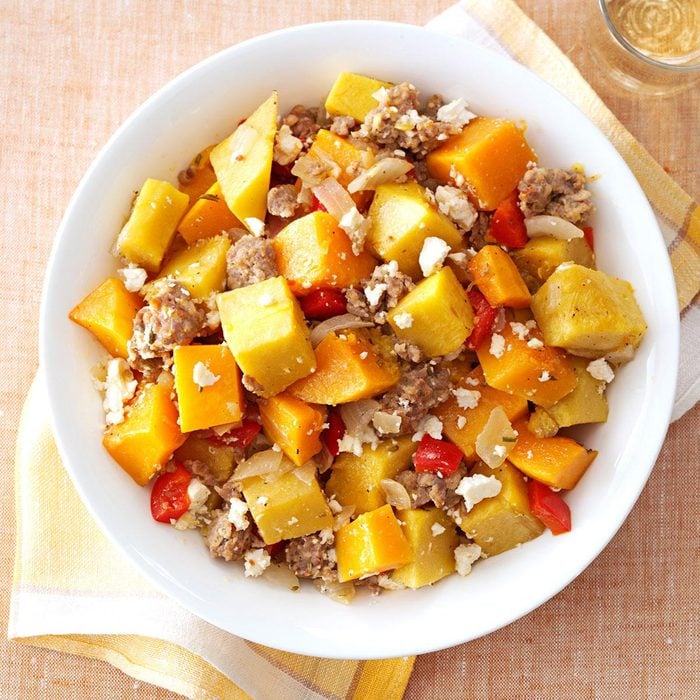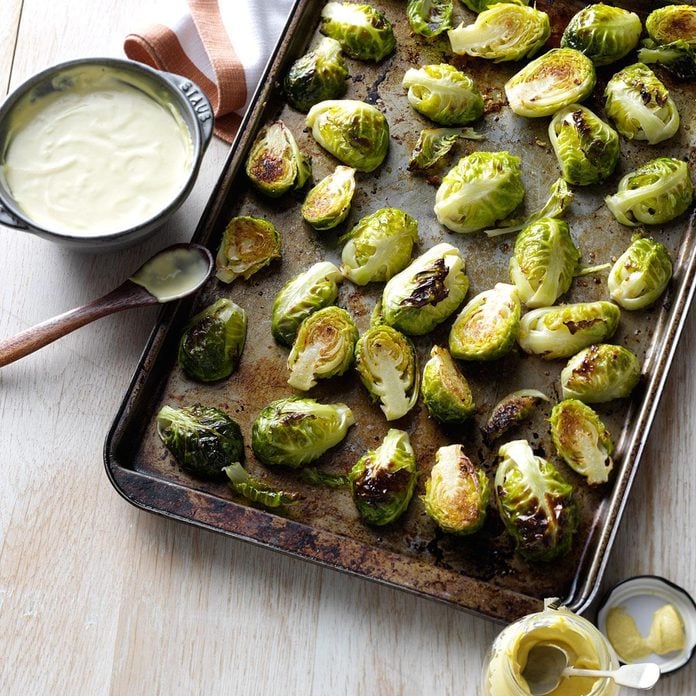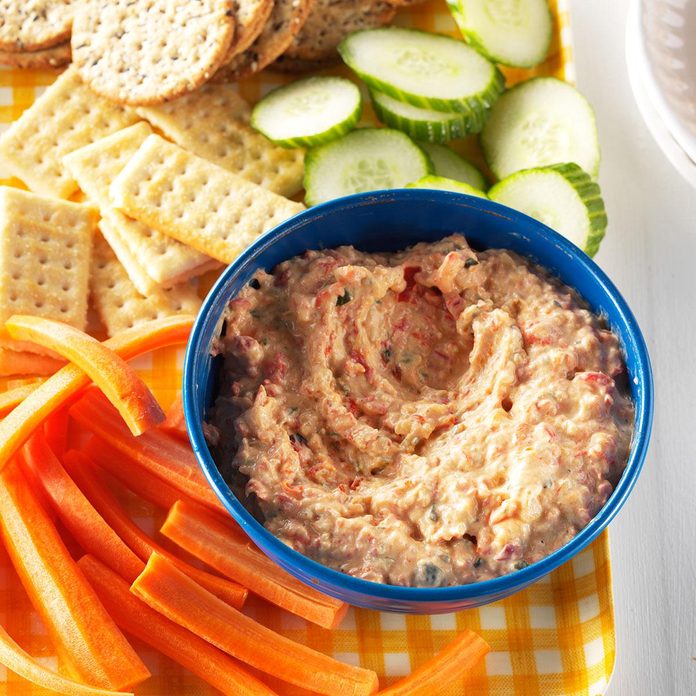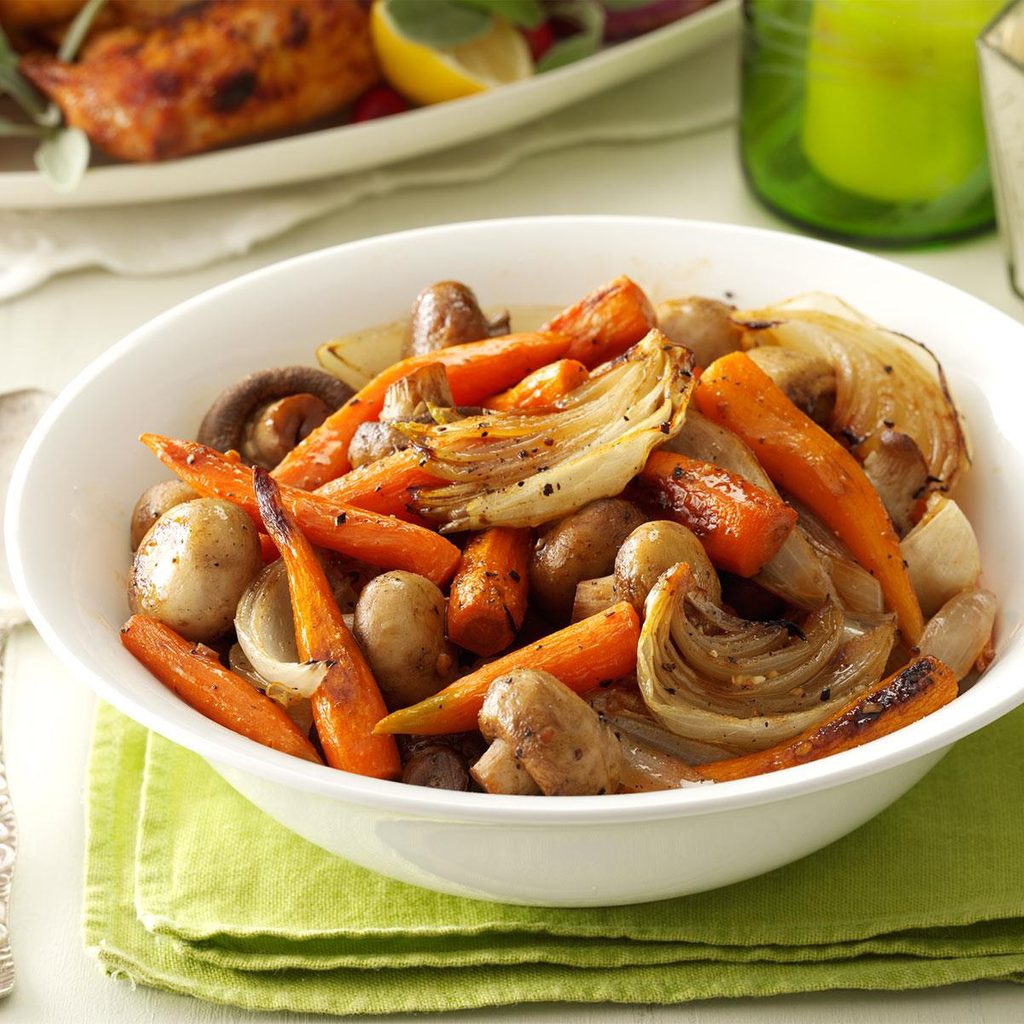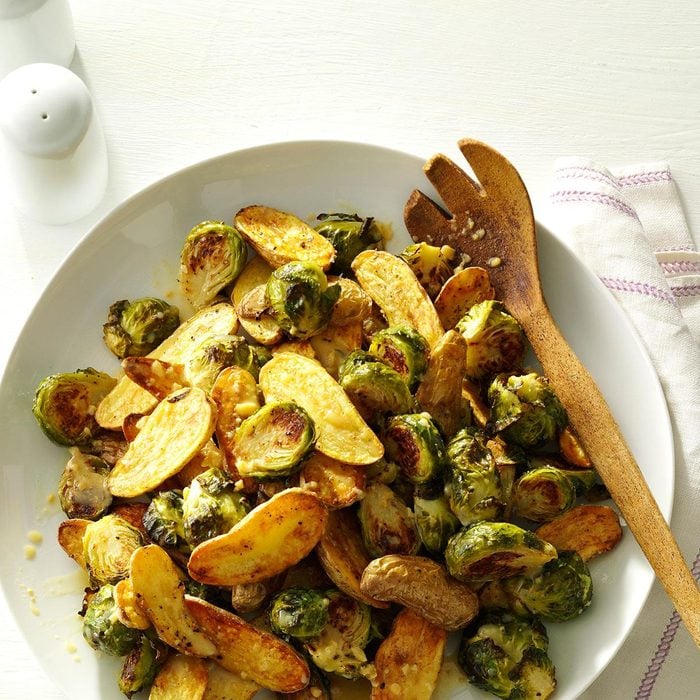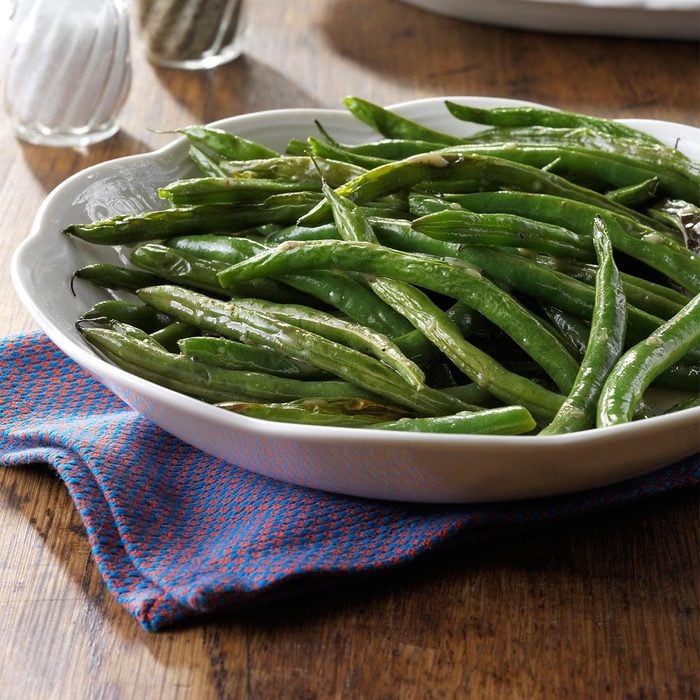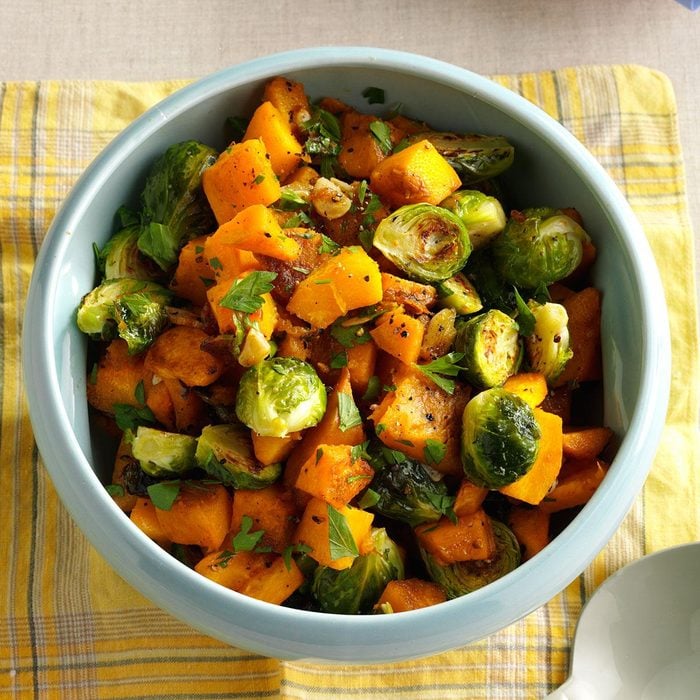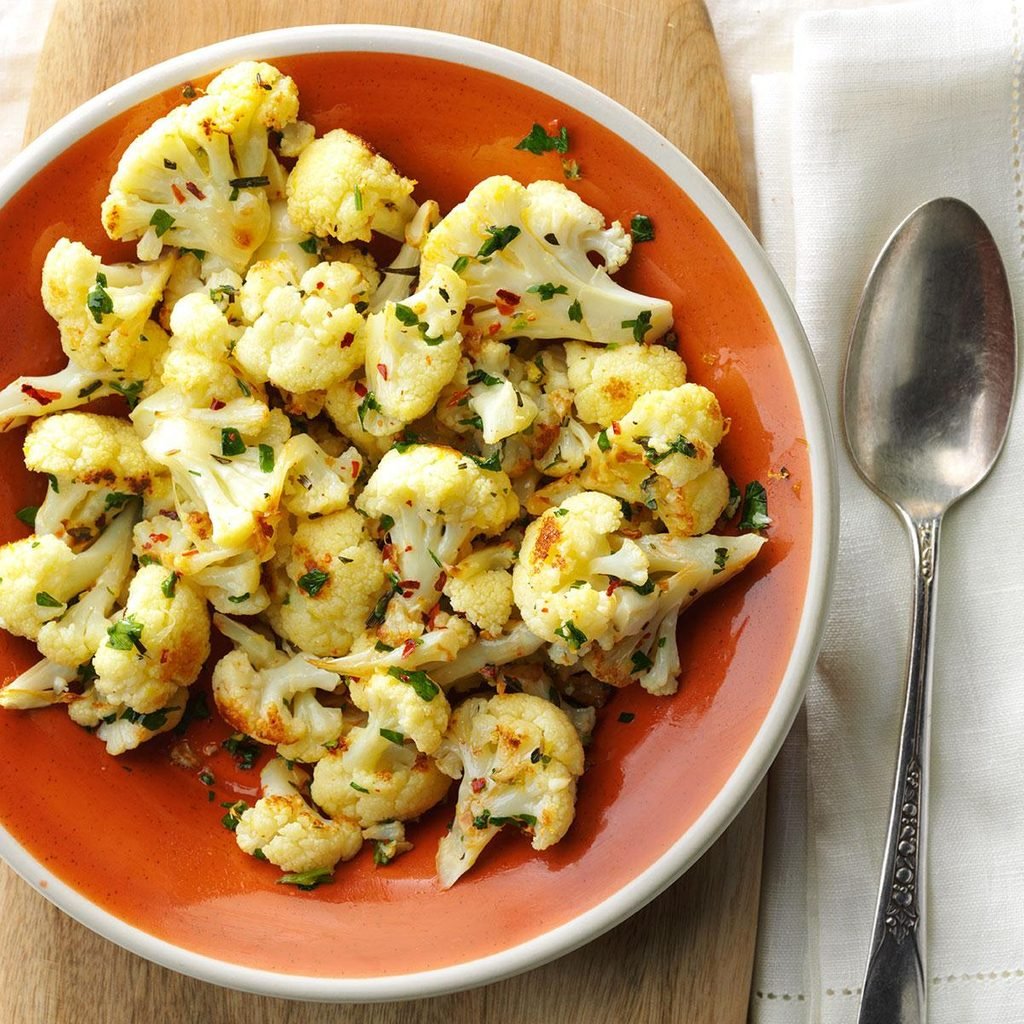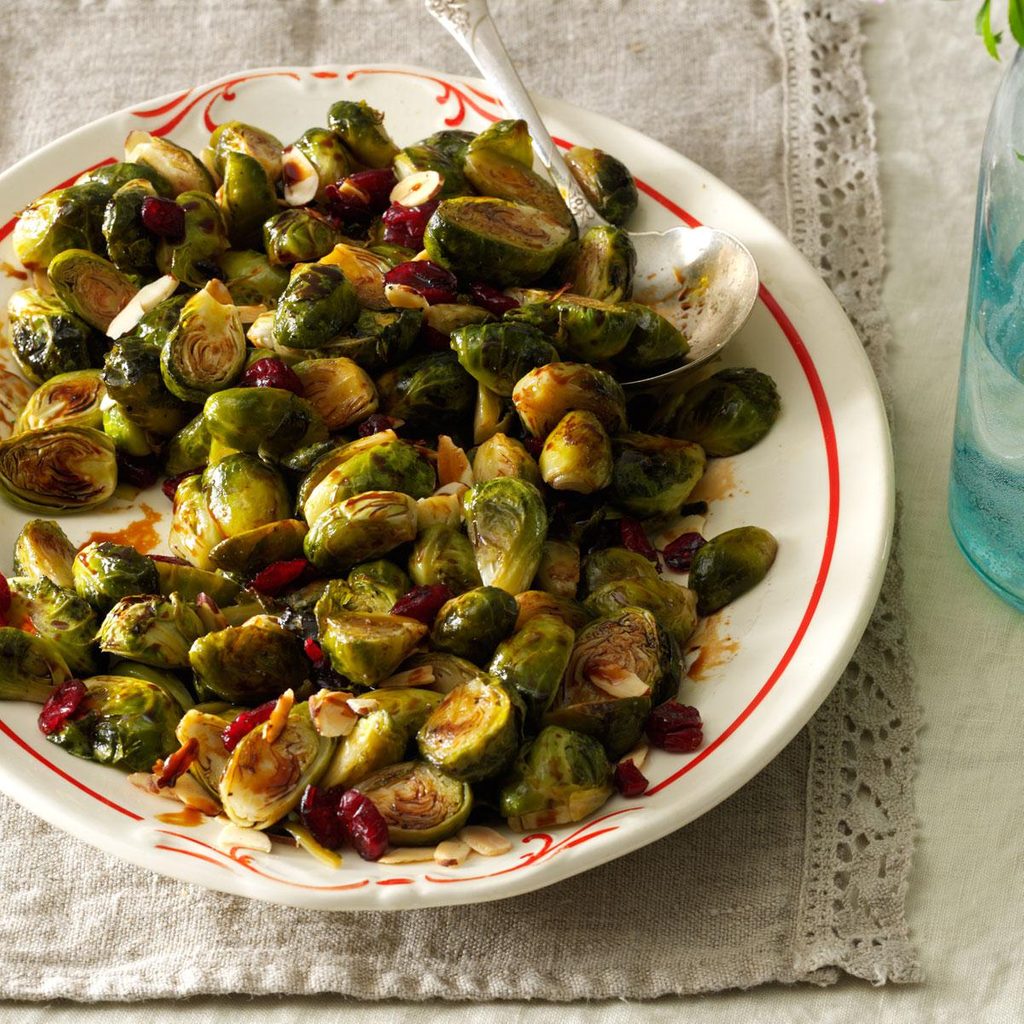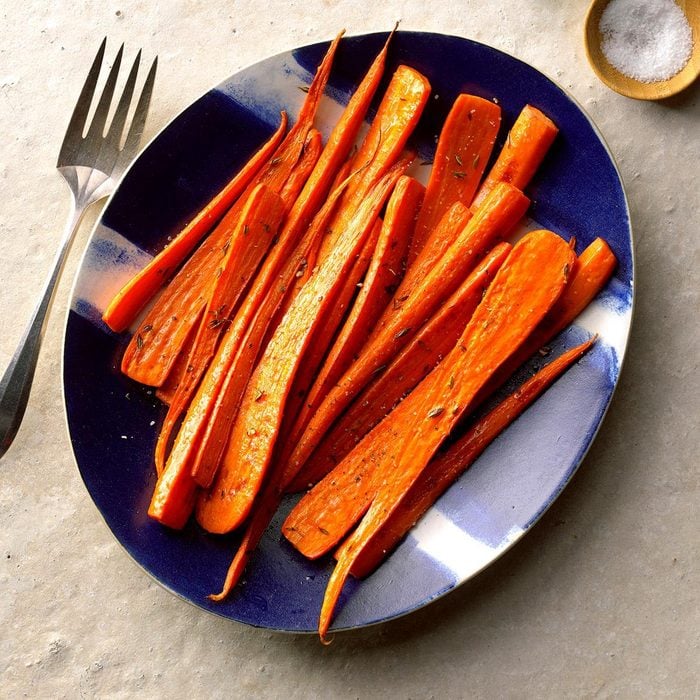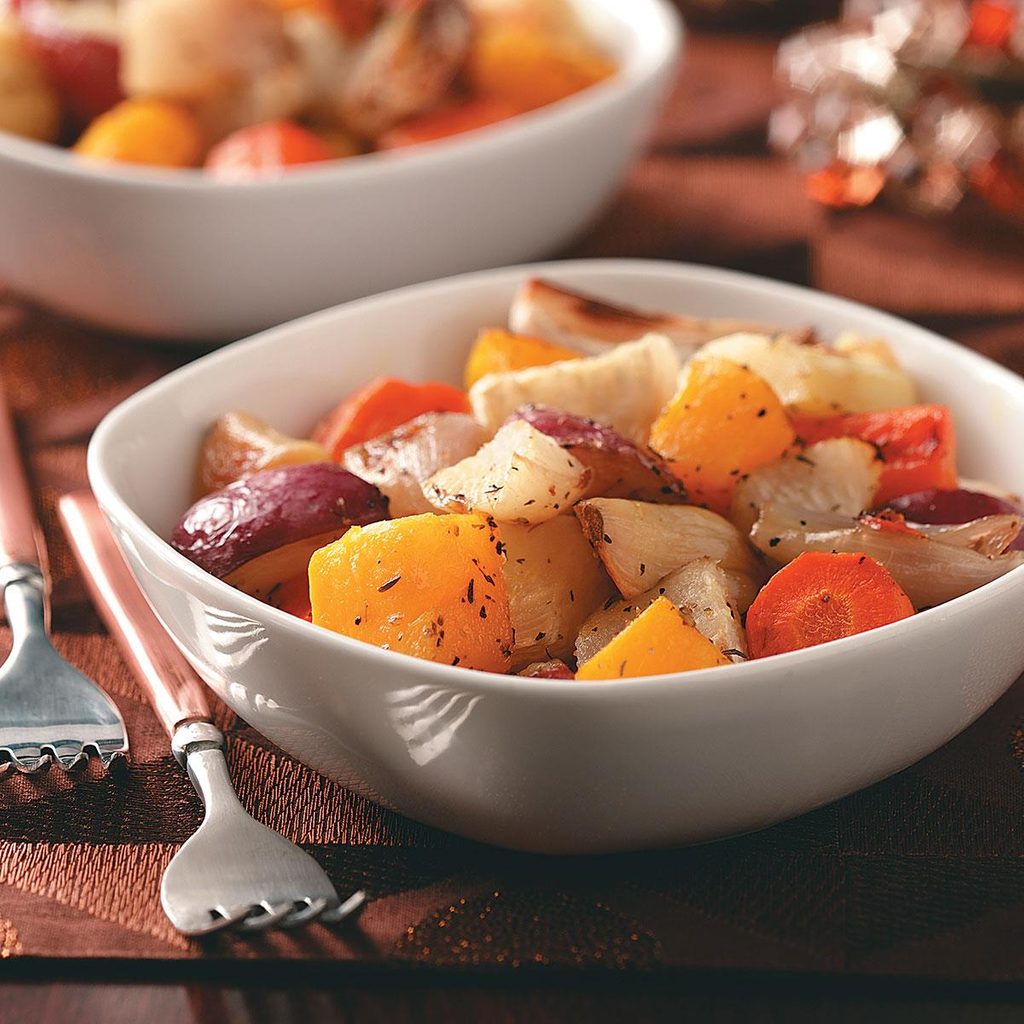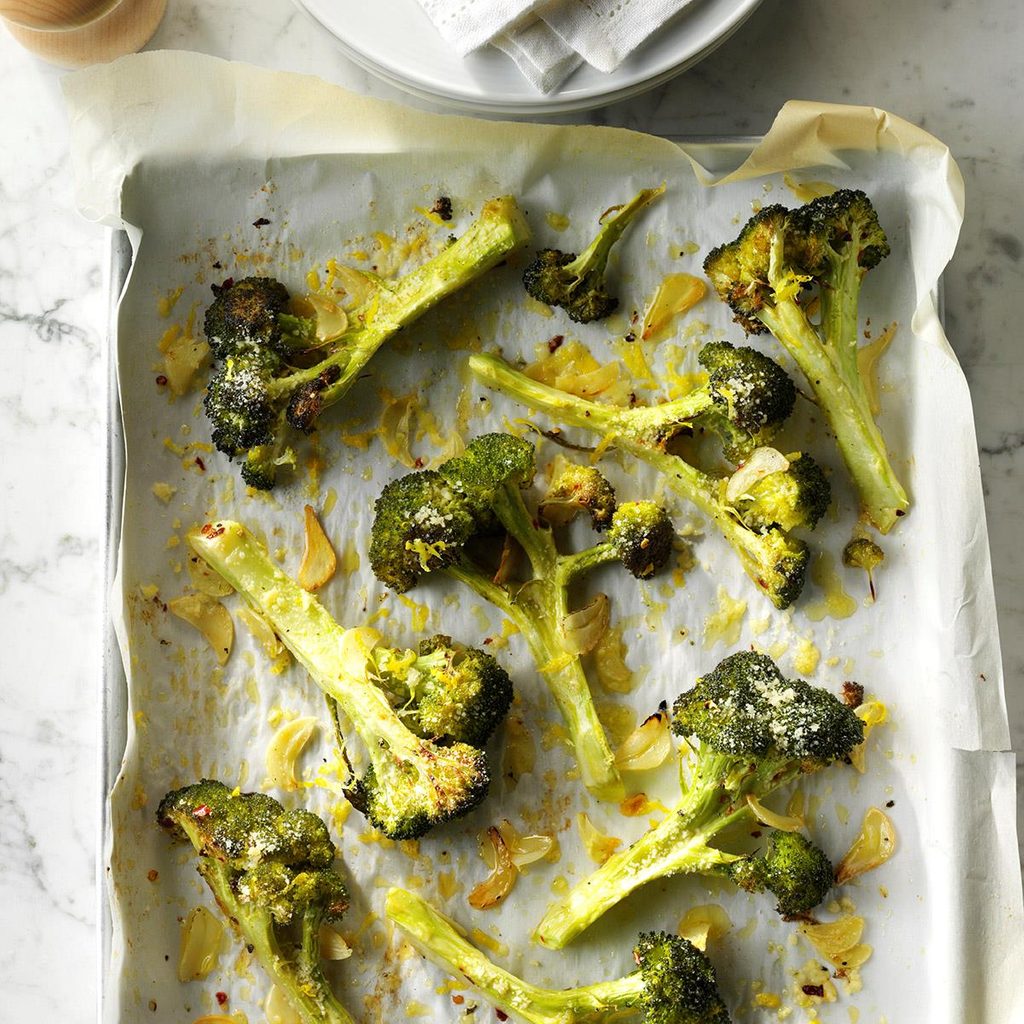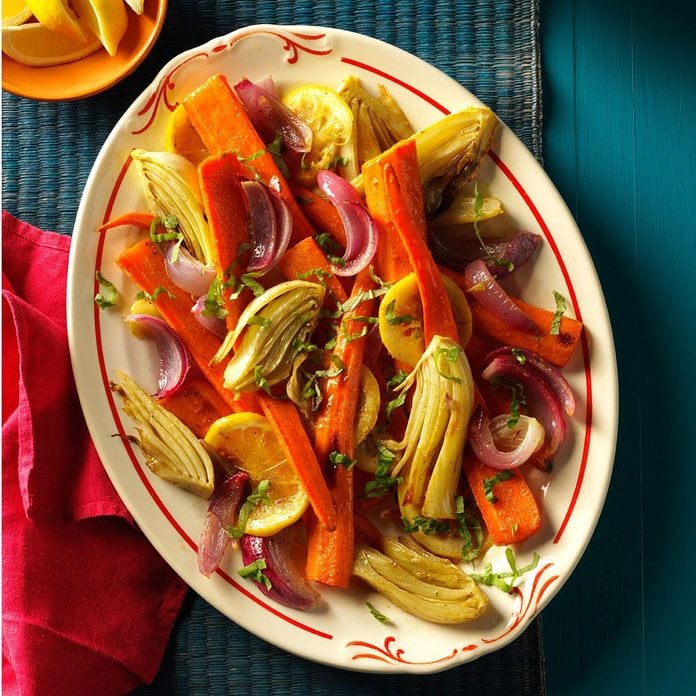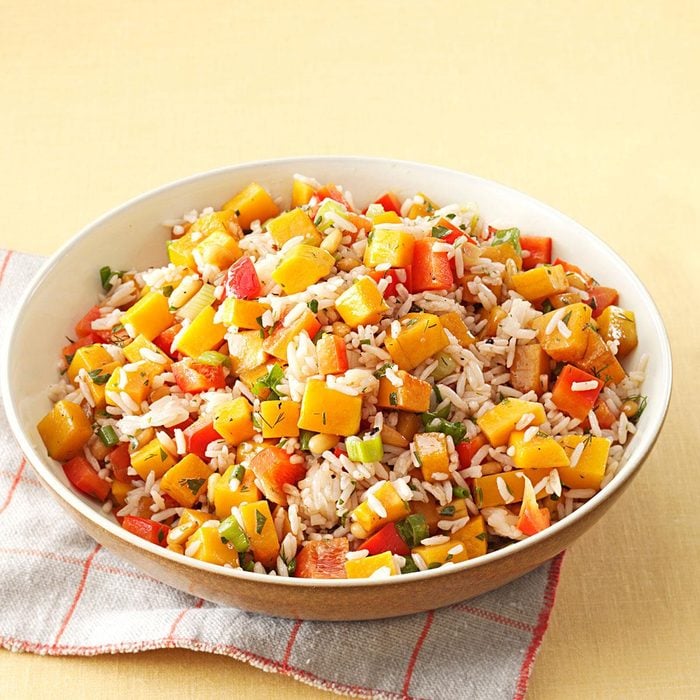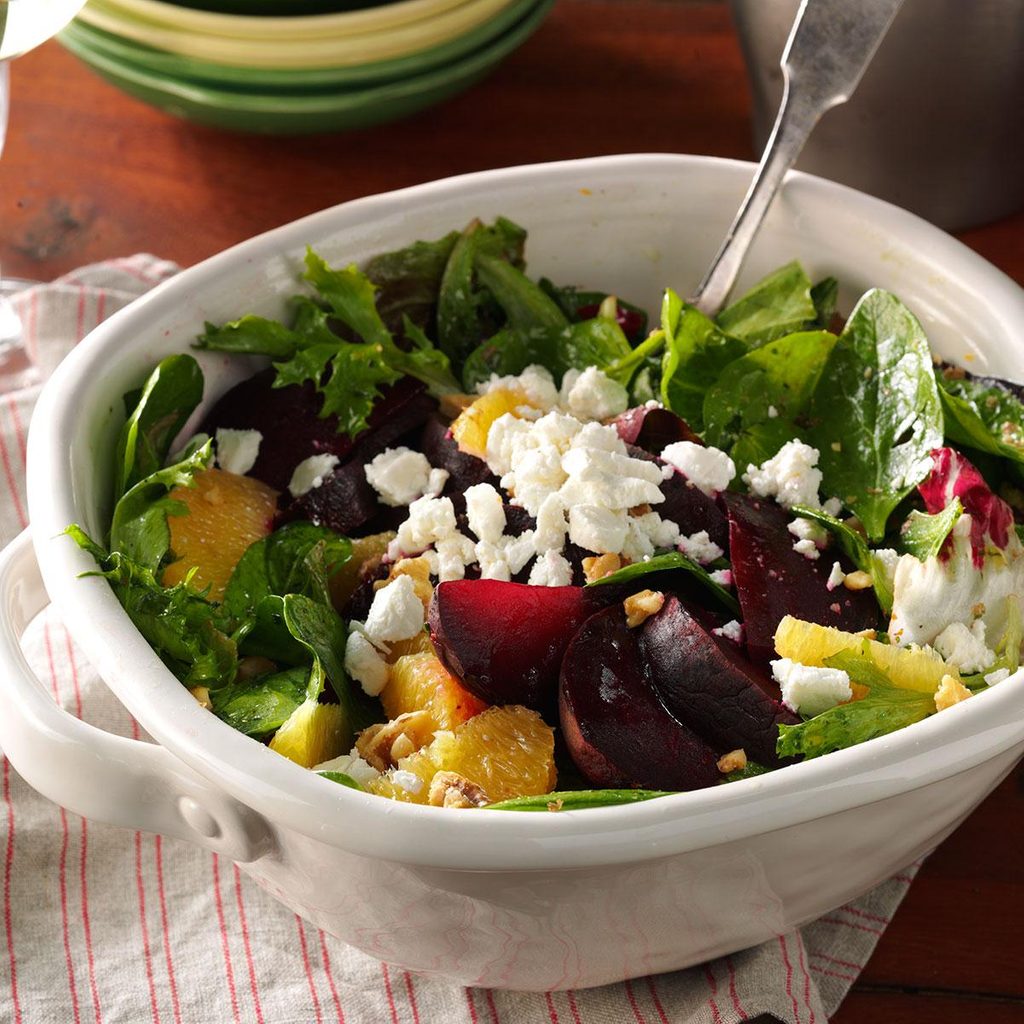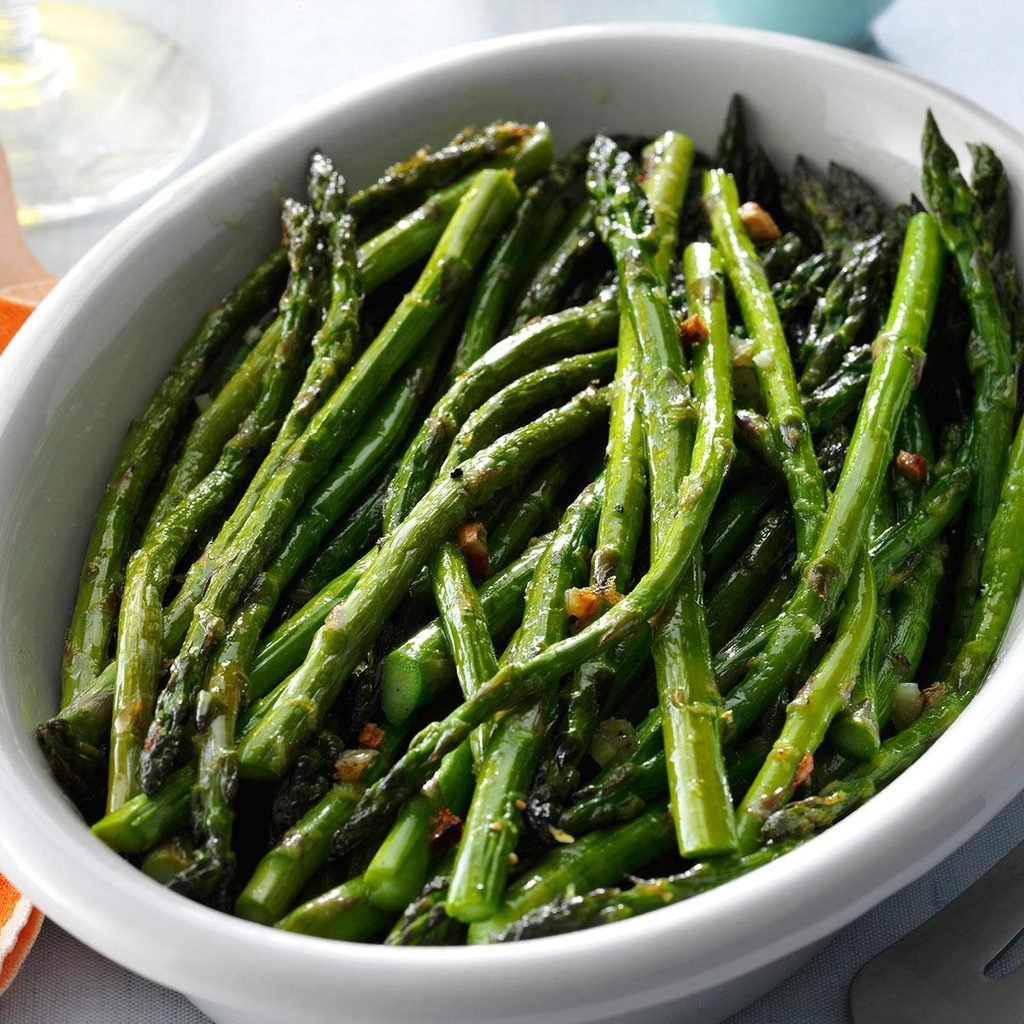How to Roast Vegetables in the Oven (Recipe Included)
Updated: Jan. 23, 2024
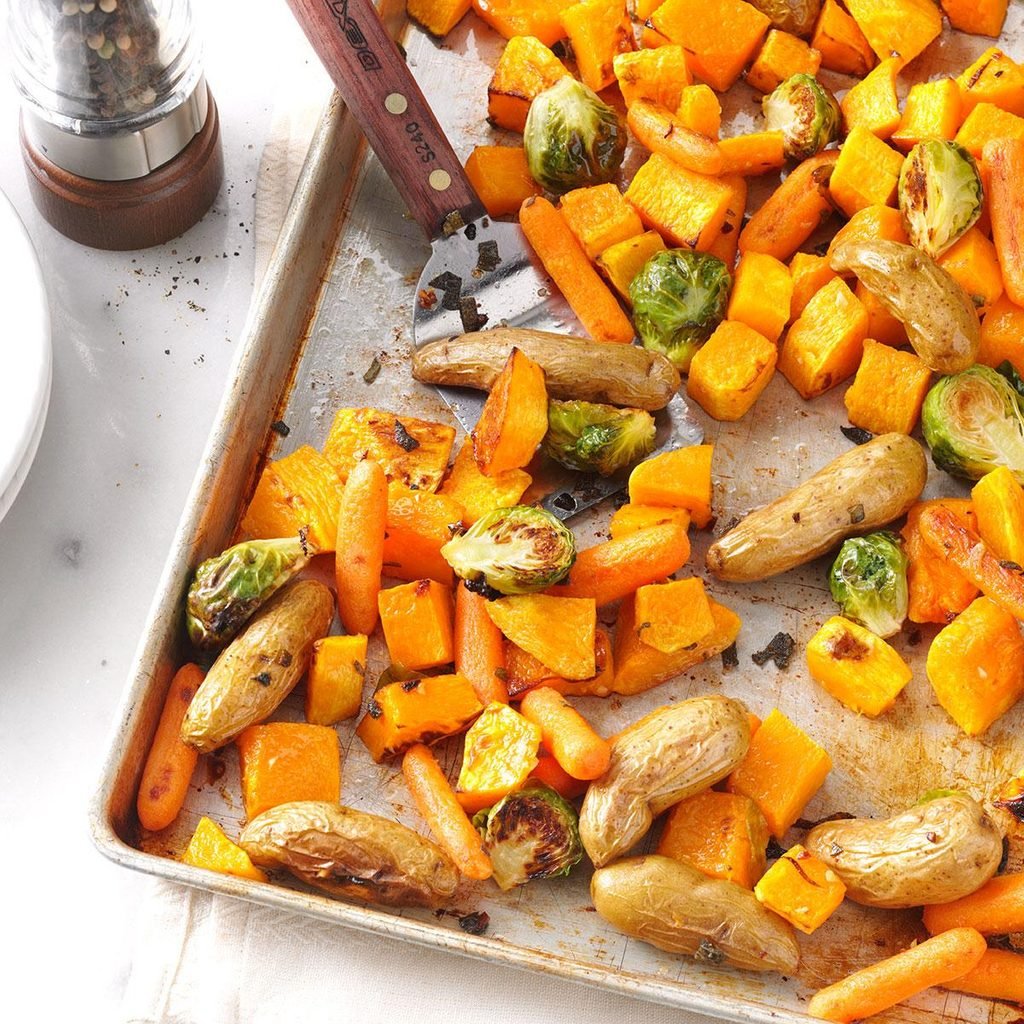
High heat plus fresh vegetables equals a flavorful, crispy and healthy addition to any meal. Here's how to roast vegetables in the oven.
If you know someone who’s not a fan of veggies, it’s probably because they haven’t tried roasted vegetables. Learning how to roast vegetables is key to making healthy, delicious side dishes, sheet pan dinners and more.
Here’s how to roast vegetables in the oven to get crispy, flavorful dishes that can turn even the pickiest eaters into veggie lovers.
On This Page
The Best Vegetables for Roasting
With the exception of tender lettuces, you can roast pretty much any vegetable. Try any of the ideas listed below, or experiment with whatever vegetables are currently in your refrigerator’s crisper drawer.
- Root vegetables: Potatoes, onions, garlic, beets, carrots
- Cruciferous vegetables: Broccoli, cauliflower, Brussels sprouts, kale
- Summer or winter squash: Zucchini, butternut squash, acorn squash
- Soft and/or thin vegetables: Bell peppers, tomatoes, eggplant, green beans, asparagus
How to Season Roasted Vegetables
No matter what type of vegetable you’re roasting, you need some kind of fat (i.e., olive oil, butter, vegetable oil, coconut oil, etc.) in order to promote browning. (Not sure which to choose? Here’s our guide to cooking oils.) Next, add seasoning in order to flavor your vegetables. Some ideas include:
- Spices: You can’t go wrong with salt and pepper, Italian seasoning, lemon pepper, or a mix of dried spices, like in this garlic-herb pattypan squash recipe.
- Dressing: Try balsamic vinegar or Italian dressing.
- Citrus: A squeeze of lemon juice will brighten up your veggies, like with this lemon pepper roasted broccoli.
- Sweeteners: Try maple syrup, brown sugar, honey or another sweetener, like in this agave roasted parsnip recipe.
Toss the vegetables with the oil and seasonings to evenly coat. For an easy roasted vegetable recipe, simply use olive oil, salt and pepper.
How to Roast Vegetables in the Oven
Roasting is a dry-heat method of cooking that makes the flavor of vegetables rich and sweet. This roasted vegetables with sage recipe is a delicious way to practice the technique of roasting vegetables in the oven. It makes eight servings.
Ingredients
- 5 cups cubed peeled butternut squash
- 1/2 pound fingerling potatoes (about 2 cups)
- 1 cup fresh Brussels sprouts, halved
- 1 cup fresh baby carrots
- 3 tablespoons butter
- 1 tablespoon minced fresh sage or 1 teaspoon dried sage leaves
- 1 garlic clove, minced
- 1/2 teaspoon salt
Directions
Step 1: Prepare the vegetables
Preheat the oven to 425°F. While you’re waiting for the oven to preheat, melt butter in the microwave. In a large bowl, drizzle the vegetables with the melted butter, stir in the remaining ingredients and toss to coat. Then transfer the coated vegetables onto a greased roasting pan.
Test Kitchen tip: Arrange the vegetables in a single layer on a heavy, shallow-sided roasting pan (here are the best sheet pans, according to our culinary experts). If the vegetables are too crowded on the pan, they’ll steam instead of getting nice and crispy.
Step 2: Roast the vegetables
Bake the vegetables for 35 to 45 minutes or until tender, stirring occasionally. The vegetables are done when you can easily pierce them with a fork or knife.
Test Kitchen tip: For uniform browning, give the vegetables a quick stir about halfway through cooking.
How Long to Roast Vegetables
Here’s how to roast virtually every type of vegetable in order to get crispy veggies every time.
Vegetable |
Temperature |
Time |
Instructions |
| Artichokes, baby | 350° | 45 to 60 minutes | Bake covered with liquid |
| Asparagus | 400° | 20 to 25 minutes | Bake uncovered |
| Beets | 350° | 30 to 60 minutes | Bake covered |
| Broccoli, florets | 425° | 8 to 14 minutes | Bake uncovered |
| Brussels Sprouts | 425° | 8 to 14 minutes | Bake uncovered |
| Carrots, whole baby | 425° | 23 to 26 minutes | Bake uncovered |
| Cauliflower, florets | 425° | 15 to 20 minutes | Bake uncovered |
| Corn on the cob | 450° | 15 to 20 minutes | Prepare as for grilling |
| Eggplant, cubed | 400° | 30 to 40 minutes | Bake uncovered |
| Garlic | 425° | 30 to 35 minutes | Bake wrapped in foil |
| Green beans | 425° | 10 to 12 minutes | Bake uncovered |
| Mushrooms, button | 425° | 20 minutes | Bake uncovered |
| Onions, quartered | 425° | 8 to 10 minutes | Bake uncovered |
| Parsnips, cubed | 425° | 45 to 50 minutes | Bake uncovered |
| Peppers | Broil | 10 minutes | After broiling, place in covered bowl for 15 to 20 minutes. Remove skins. |
| Potatoes, whole | 400° | 45 to 50 minutes | Pierce with fork before baking |
| Rutabaga, cubes | 425° | 25 to 30 minutes | Bake uncovered |
| Squash, summer | 425° | 15 to 20 minutes | Bake uncovered |
| Squash, winter | 350° | 45 to 120 minutes | Bake uncovered |
| Sweet potatoes, cubed | 400° | 30 to 60 minutes | Bake uncovered |
| Tomatoes | 400° | 30 to 60 minutes | Bake uncovered |
Tips for Roasted Vegetables
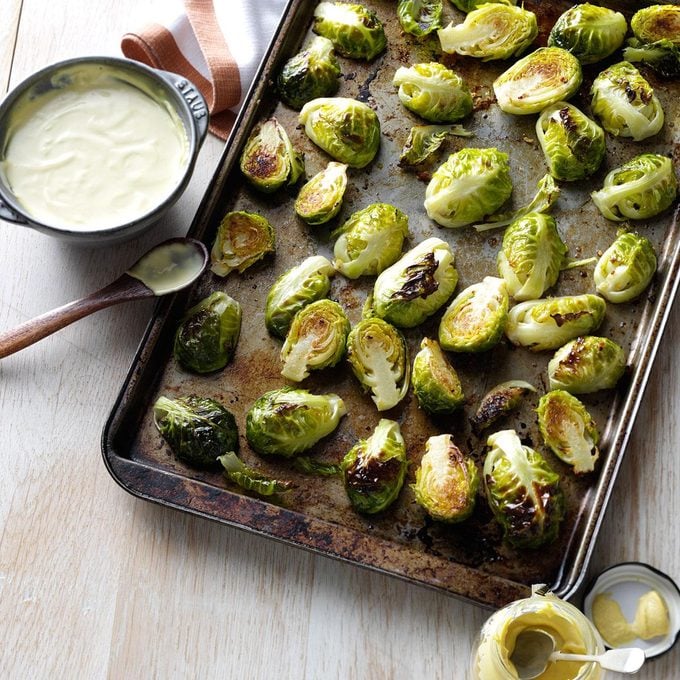
These expert tips for how to roast vegetables come straight from our Test Kitchen.
What temperature is best for roasting vegetables?
The best temperature for roasting vegetables is around 400° to 425°F. In general, you want to roast vegetables until they’re fork tender and have caramelized edges. Roasting vegetables at a high temperature brings out their natural sweet flavors and promotes caramelization.
However, the exact temperature needed for perfectly roasted veggies depends on the cook time, the type of vegetables you’re roasting and the way in which you slice them. The smaller you cut your vegetables, the shorter the cook time.
Do you cover vegetables when roasting in the oven?
Generally, you don’t cover vegetables when roasting them in the oven. Covering vegetables will steam them instead of browning them. However, covering with foil is a tried-and-true method for roasting garlic.
To make tender (but not crispy) baked vegetables, season them and place them on the dull side of an 18×12-in. piece of heavy-duty foil. Then fold the foil around the veggies, sealing tightly. Finally, place the foil packet on a sheet pan and bake at 400°F for 20 to 30 minutes, turning once. (For a complete meal, try this chicken veggie packets recipe.)
How do you roast vegetables at the same time?
To roast several different types of vegetables at the same time on one pan, cut similar-density vegetables into uniform pieces so they cook evenly. (For instance, cut dense vegetables such as carrots and potatoes into smaller pieces than more tender vegetables like zucchini or broccoli.)
Alternatively, don’t be afraid to roast heartier vegetables, like potatoes and butternut squash, separately from more delicate veggies, like green beans and asparagus. (Here are more tips for how to roast potatoes.)
A third strategy is to roast your veggies in stages. Start with the vegetables that have the longest cooking time and add faster-cooking vegetables to the pan later in the roasting process.
Why are my roasted vegetables soggy?
There are several reasons why your roasted vegetables may be turning out soggy:
- The oven temperature was too low. In most cases, you want your oven at 400° or 425°F.
- The pan was too crowded. If everything is crammed together on the sheet pan, your vegetables will steam instead of caramelizing. Give your vegetables enough space to breathe, which may mean using two sheet pans.
- There was too much oil. One or two tablespoons of oil is typically enough to coat your veggies.
In addition to these potential missteps, avoid other oven-roasted vegetable mistakes, too.
How do you keep roasted vegetables warm?
Roasted vegetables taste best when you eat them immediately, straight from the oven. But if you’re cooking for a crowd and need to keep them warm for a few hours before serving, place them in your oven drawer or keep them warm in a low-temperature oven—around 200°F. (Here’s other tips for how to keep food warm.)
To reheat roasted vegetables, drizzle them with a little more oil and stick them in a 450°F oven for 5 to 10 minutes until they’re warmed through. You can also broil them for a few minutes. (If you reheat roasted veggies in the microwave, they’ll lose their crispiness.)

